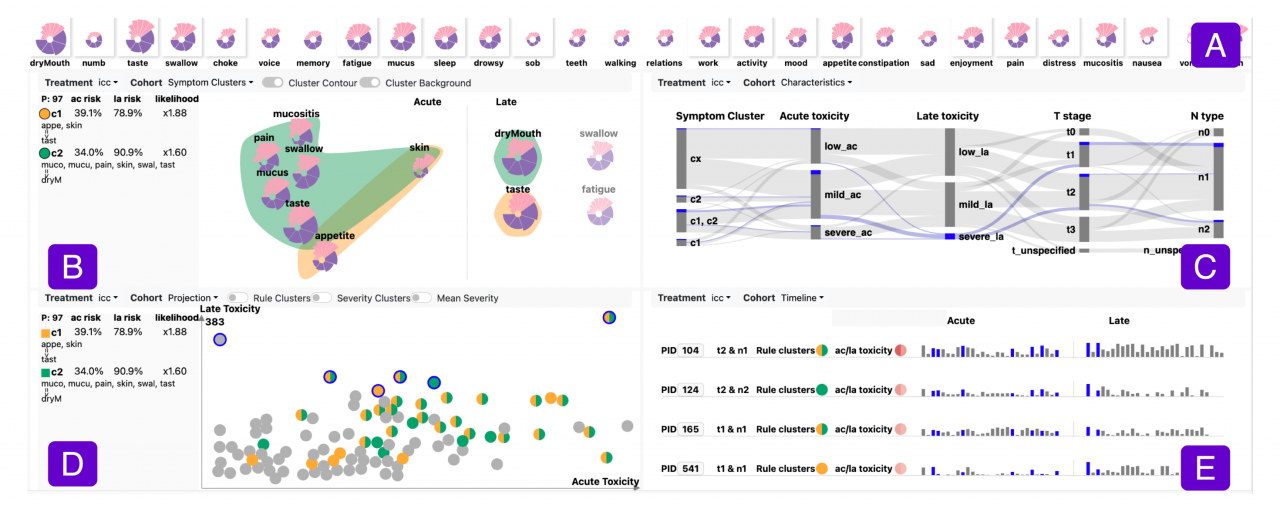|
|
||||||||||||||||||
Roses Have Thorns: Understanding the Downside of Oncological Care Delivery Through Visual Analytics and Sequential Rule Mining
Authors: Floricel, C., Wentzel, A., Mohamed, A., Fuller, C.D., Canahuate, G., Marai, G.E.
Publication: IEEE Trans. Vis. Comp. Graphics, VIS 2023, pp. 1-11 Personalized head and neck cancer therapeutics have greatly improved survival rates for patients, but are often leading to understudied long-lasting symptoms which affect quality of life. Sequential rule mining (SRM) is a promising unsupervised machine learning method for predicting longitudinal patterns in temporal data which, however, can output many repetitive patterns that are difficult to interpret without the assistance of visual analytics. We present a data-driven, human-machine analysis visual system developed in collaboration with SRM model builders in cancer symptom research, which facilitates mechanistic knowledge discovery in large-scale, multivariate cohort symptom data. Our system supports multivariate predictive modeling of post-treatment symptoms based on during-treatment symptoms. It supports this goal through an SRM, clustering, aggregation back end, and a custom front end to help develop and tune the predictive models. The system also explains the resulting predictions in the context of therapeutic decisions typical in personalized care delivery. We evaluate the resulting models and system with an interdisciplinary group of modelers and head and neck oncology researchers. The results demonstrate that our system effectively supports clinical and symptom research. Index Terms: Temporal Data; Life Sciences; Mixed Initiative Human-Machine Analysis; Data Clustering and Aggregation Date: October 22, 2023 - October 27, 2023 Document: View PDF |